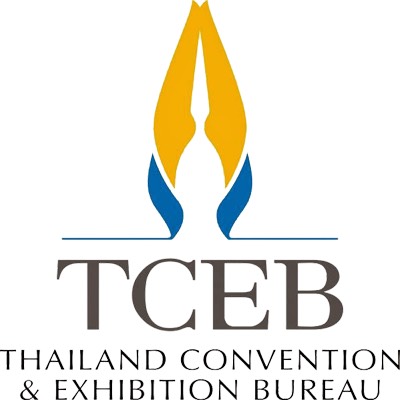Destination Guide
Thailand is Asia’s most popular vacation destination. Not only do travelers stay longer in this Land of Smiles, they also return, again and again, as there are always new places to see and things to do.
Thailand’s diverse and magical charms can never be exhausted, as a browse through this brochure will show. There are ideas here to tempt every traveler, every age group from children to senior citizens. And, for this program, Royal Orchid Holidays have created a range of innovations designed to encourage visitors to stay even longer.
In addition to exotic sightseeing, golden temples and an ancient culture, visitors can learn the art of Thai cooking, relax on escapist tropical beaches, be active with exciting adventures on land or water, shop till they drop, then rejuvenate body and mind at a luxurious spa – even have a medical check-up! And always, Thailand’s superb hotels and friendly people will guarantee the warmest of welcomes.
Escape a dull climate, escape stress, escape the ordinary and travel to Thailand, where reality does live up to expectation. Let the Association of Thai Travel Agents be your passport to memorable vacations.
Central and Eastern Thailand
Central and eastern Thailand consists of 26 provinces, including the capital, Bangkok. Geographically, this is Thailand’s heartland, from Lop Buri in the north covering the great rice bowl of the Central Plains surrounding the Chao Phraya River, and turning down the east and west coasts of the upper Gulf of Thailand. This is Thailand’s most fertile farming area, home to orchards, paddy fields and plantations.
Historically the Thais moved gradually down from the north, replacing Khmer influence as they came. First at Lop Buri, then setting up a kingdom that lasted 417 years with a capital at Ayutthaya. When the Burmese destroyed Ayutthaya in 1767, the capital moved to Bangkok, which will celebrate its 220th anniversary in 2002.
The central region is one of history – ancient temples, battlefields and ruins, with the two capitals of Ayutthaya and Bangkok providing the greatest attractions for visitors. The east and west coasts draw huge numbers of visitors every year – Thais taking long weekends and holidays to enjoy the beaches, whilst holiday-makers from across the world are discovering the warm tropical beaches.
On the East Coast, the 400 kilometres of coastline that stretches from Chon Buri down to Rayong boasts some of the finest beaches in Asia, with Pattaya and its vast range of accommodation, facilities and activities as the centre. Those wanting a more relaxing time, move further down the coast to Rayong, Ko Sa Met island, and the stunning islands of Ko Chang National Park near the Cambodian border.
On the west coast, the resorts of Cha-am and Hua Hin are beginning to attract more international travellers who prefer their more laid-back atmosphere, with Hua Hin in particular developing infrastructure rapidly.
The odd-man out in this region is Kanchanaburi, the western-most province that wends its way into the great mountains on the Myanmar border, providing some of Thailand’s best scenery of forest, mountains, lakes and caves centred around a number of national parks and wildlife sanctuaries.
Northern Thailand
The North’s 17 provinces comprise two distinct areas: the wide plains of the lower north from Nakhon Sawan up to Sukhothai, leading into the mountainous upper north that has long borders with Myanmar and Laos. The great mountains along both borders produce breathtaking scenery, waterfalls, fast rivers perfect for rafting, and are home to many ethnic peoples.
The region enjoys three seasons: hot from March to May, wet from June to November, and cool from December to February. However, up in the mountains “cool” can be extremely cold.
The Thai nation began in the North, initially as city states, which were gradually united under the Lanna kingdom centred on Chiang Mai in the 13th century. The process was continued by Sukhothai, the first capital of Thailand. Throughout its long history, there has been strong Burmese and Lao influence, particularly in the upper north, seen in both its architecture and cuisine.
However, the nomadic hilltribes have been a law unto themselves, wandering back and forth across borders. Today, they are more settled in villages across the northern mountains. There are six main tribal groups, originatingfrom southern China and Myanmar – Karen, Hmong, Lahu, Mien, Akha, Lisu – all with their own unique
customs and costumes, which is the great attraction for many travellers.
Most travellers head for Chiang Mai, the northern capital, as a base for visiting ethnic tribes, for soft adventure and for shopping. The lure of rafting, trekking and tribal villages is strong in Chiang Rai and Mae Hong Son, particularly the adventure village ofPai. Remote areas like Nan and Tak are becoming more accessible, attracting visitors with the promise of great activity and exploration. To the south, the Historical Park at Sukhothai is a must-see for travellers who want to discover more about the history and culture of Thailand.
Northeasthern Thailand
With 19 provinces, the huge northeastern plateau occupies almost one third of Thailand. It is bordered to the north by the Mekong River, separating Thailand from Laos, and to the south by the Dong Rek Mountains along the boundary with Cambodia.
Known as Isan, the name of the Mon-Khmer kingdom that once flourished here, the Northeast is one of most traditional areas of the country, a land based on agriculture and cottage industries. Old Thai customs remain relatively unchanged, and the population is renowned as being friendly and polite, even though it is one of the poorest. It is a region with great history, and a strong Laotian influence in its architecture, customs, and language. Evidence of prehistoric settlements can be found along the Mekong River, in cliffpaintings and at archaeological sites like Ban Chiang. The lower Northeast was part of old kingdom of Angkor, with ruins ofimpressive Khmer sanctuaries scattered across the countryside.
These Khmer prasat hin (stone castles) throughout Buri Ram, Nakhon Ratchasima, Surin and Si Sa Ket are popular tourist attractions, particularly the superbly restored sites at Phimai and Phanom Rung, both historical parks. The great temple complex at Khao Phra Viharn on the Cambodian border is also now accessible to visitors after a long period ofisolation.
Other major attractions include the prehistoric sites at Ban Chiang and Ban Prasat, the ancient revered temples at Phra That Phanom and Phra That Renu Nakhon and the wonderful silk-weaving villages in Khorat and Khon Kaen. The region is also home to some of Thailand’s best loved national parks – Khao Yai, Phu Kradung and Phu Rua in Loei. To counter the region’s great sized, an excellent road, rail and domestic flight network links all the major centres.
Southern Thailand
The South’s 14 provinces stretch along the narrow peninsula of Thailand from Chumphon to the Malaysian border, 1,200 kilometres from Bangkok. Its long coastline of golden beaches and islands, with a rugged hinterland of mountains and forests, is of two characters. The east coast, facing the Gulf of Thailand, is softer with long wide bays and gentle seas; the Andaman Sea coast is more rugged and exciting, with stunning islands, limestone rock formations and cliffs.
The climate differs from the rest of Thailand due to two seasonal monsoons: the southwest monsoon sweeping the west coast and Andaman Sea from May to October, while the northeast monsoon moves across the Gulf of Thailand form November to February. The peninsula acts as a barrier, causing different rainy periods to the two coastlines.
It’s an ancient region that was independent until the 9th century, when the Buddhist Srivijaya empire united the area. Eventually it came under the rule of Ayutthaya and then Bangkok. Throughout its history there has been strong Chinese and Malaysian influence, which has impacted on its culture. The further south you go, the stronger the Malaysian influence, with a predominance of Muslim communities, Islamicmosques and a dialect akin to Malays. Rice fields are replaced by rubber plantations, and Chinese tin mining operations are more evident.
The coastline plays a major role in attracting tourists, with Samui island in the Gulf of Thailand becoming increasingly popular as a laid-back holiday spot, with excellent diving opportunities at nearby Tao and Pha-ngan islands. The Andaman Sea coast offers many more exciting travel opportunities, led by the beautiful beaches of Phuket Island,
Thailand’s top vacation resort. However, the fascinating rock formations and offshore islands at Phang-nga, Krabi and Trang are becoming increasing popular with tourists, divers and sailors. The rugged interior of mountains, rivers and forests in a host of national parks is also gaining in popularity among eco-tourists, with growing numbers of safari expeditions on foot, by elephant and by canoe.







